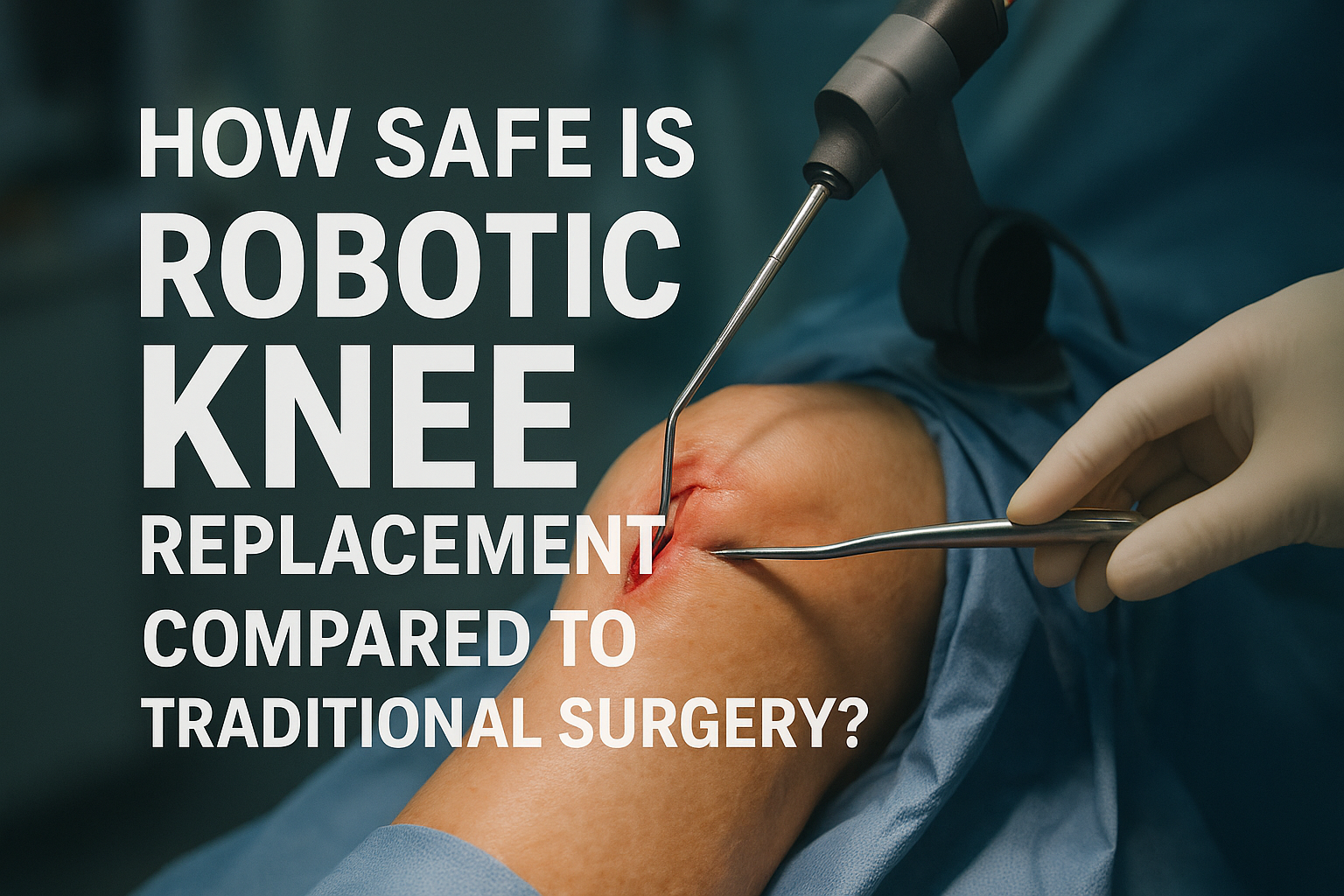Knee pain caused by arthritis, injuries, or age-related degeneration often leads patients to consider knee replacement surgery. With advancements in technology, robotic knee replacement has emerged as a modern alternative to traditional knee surgery. But how safe is this innovative approach compared to conventional methods? Let’s explore in detail.
Understanding Traditional Knee Replacement
In traditional knee replacement surgery, the surgeon relies on manual techniques and surgical tools to remove damaged cartilage and bone. An implant is then placed to restore joint function. While this procedure has helped millions worldwide, outcomes may vary depending on the surgeon’s expertise and the patient’s condition.
What is Robotic Knee Replacement?
Robotic-assisted knee replacement uses advanced robotic technology to aid the surgeon in achieving higher precision. A 3D model of the patient’s knee is created, allowing accurate planning and implant positioning. The robot does not perform the surgery independently; instead, it enhances the surgeon’s control.
Safety Benefits of Robotic Knee Replacement
Robotic knee replacement is gaining popularity because of its advanced safety features. Some of the key benefits include:
• Greater Accuracy – 3D mapping ensures better implant alignment.
• Minimally Invasive – Smaller incisions reduce the risk of infection.
• Less Blood Loss – Advanced tools minimize tissue damage.
• Faster Recovery – Patients often regain mobility quicker.
• Reduced Complications – Accurate placement lowers revision rates.
Safety Concerns with Traditional Surgery
Traditional surgery remains safe and widely performed, but there are some limitations when compared with robotic methods:
• Higher chances of human error in implant positioning.
• Longer hospital stay and slower recovery in some cases.
• Greater post-surgery discomfort due to larger incisions.
• Slightly increased risk of complications in complex cases.
Comparing Both Techniques
When comparing robotic knee replacement vs traditional surgery, studies show that robotic-assisted techniques provide more consistent outcomes, especially in alignment accuracy and recovery time. Traditional surgery is still effective, especially in experienced hands, but robotic surgery offers a technologically enhanced level of safety.
Who Should Consider Robotic Knee Replacement?
• Robotic technology may be ideal for:
• Patients with severe arthritis.
• Individuals seeking faster recovery.
• Younger patients needing long-lasting implant placement.
• Those who want minimal tissue damage and precision.
Conclusion
Robotic knee replacement offers advanced precision, quicker recovery, and reduced risks compared to traditional surgery. However, the safety of both methods depends on patient health and surgical expertise.
While traditional knee replacement has proven long-term results, robotic-assisted surgery provides enhanced accuracy and comfort. Choosing between them requires a personalized medical assessment.
👉 For expert advice and advanced treatment, consult our Dr. Harish Orthocare today.

